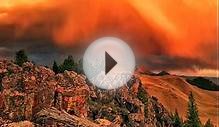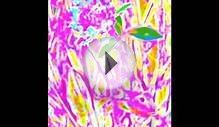
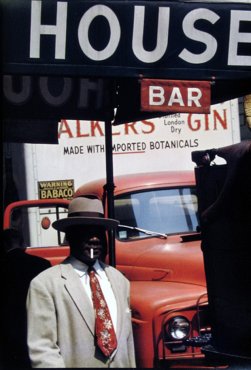 I can’t remember the exact moment that I discovered the work of Saul Leiter. I think I remember seeing some link on the internet about the discovery of one of the earliest “pioneers” in color street photography. But upon hearing this, I didn’t dig into it too deeply.
I can’t remember the exact moment that I discovered the work of Saul Leiter. I think I remember seeing some link on the internet about the discovery of one of the earliest “pioneers” in color street photography. But upon hearing this, I didn’t dig into it too deeply.
About a year ago when I was in Marseille, I re-discovered Saul’s work through a good friend of mine, Yves Vernin. When I left Marseille back to America, he gave me a beautiful Saul Leiter book. When I flipped through the pages, I was overwhelmed by the beautiful colors, reflections, and abstractions of Leiter. It was unlike any street photography I had seen before. It was much more romantic, poetic, and full of expression.
I then started to research more on Saul Leiter and have not only appreciated his images, but his philosophy of life. At his late eighties, he is very down-to-earth, and has no interest in legacy or fame. He lived a simple life and even now with his sudden rise in fame, his ego hasn’t inflated one bit.
In anticipation for the DVD release of his film “In No Great Hurry” I wanted to write this article about lessons in street photography (and life) I have learned from Saul Leiter.
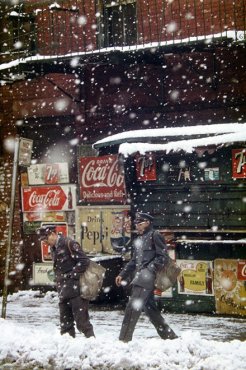 1. Compress your images
1. Compress your images
I have never been a fan of using telephoto lenses in street photography. Generally I find them to be impersonal, and a bit sneaky when taking photos of strangers.
However my opinions have changed once I started seeing the work of Leiter. His images aren’ sneaky at all. They focus on shapes, lights, shadows, abstractions, and the colors of everyday life. Much of his street photography is shot with a relatively long lens– which compresses his scenes. I feel the compression of the scenes with the long lens creates a distinctive geometric look, which I very much enjoy.
Q: Many of your images have a compressed spatial perspective. Was the telephoto your preferred lens?
Leiter: I liked different lenses for different times. I am fond of the telephoto lens, as I am of the normal 50 mm lens. I had at one point a 150 mm lens and I was very fond it. I liked what it did. I experimented a lot. Sometimes I worked with a lens that I had when I might have preferred another lens. I think Picasso once said that he wanted to use green in a painting but since he didn’t have it he used red. Perfection is not something I admire. [Laughs]. A touch of confusion is a desirable ingredient.
As you see in the transcript above, Leiter was a huge fan of experimentation and used different focal lengths to discover his visual language and imagery. At a time when using wide angle lenses were suitable for street photography– he went against the grain and used telephoto lenses to compress his images. And through this compression, he could simplify his images and create more distinct geometric shapes.
Takeaway point:
I am not encouraging everyone to go out and buy a 500mm lens for street photography– but I do encourage everyone to experiment with different focal lengths.
Personally I still prefer street photography with wider lenses (35mm, 28mm) but if you are going for a certain look and perspective– you need to use different focal lengths.
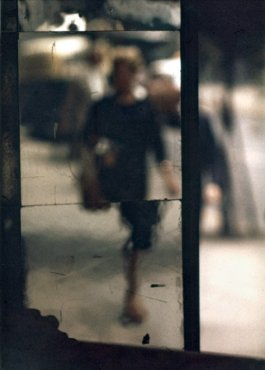 So if you are into compression and geometric shapes (Henri Cartier-Bresson used a 50mm most of his entire life) try using a longer lens. Discover your visual imagery through experimentation.
So if you are into compression and geometric shapes (Henri Cartier-Bresson used a 50mm most of his entire life) try using a longer lens. Discover your visual imagery through experimentation.
2. Don’t worry about fame
One of the things I find most admirable about Leiter is that he lived a simple life without worrying about fame or recognition for his work. Very similar to Vivian Maier he shot mostly for himself and stored his color slide shots in a box. It wasn’t until the 90’s when he started to print his images did he start getting recognized for his work.
Even though now he is immensely popular and being written into the canon of the “Masters” of street photography, he is still humble about his work and life.
Leiter never cared to be famous for his work, as he shares:
“**I’ve never been overwhelmed with a desire to become famous**. It’s not that I didn’t want to have my work appreciated, but for some reason — maybe it’s because my father disapproved of almost everything I did — in some secret place in my being was a desire to avoid success.
My friend Henry [Wolf] once said that I had a talent for being indifferent to opportunities. He felt that I could have built more of a career, but instead I went home and drank coffee and looked out the window.”
In an interview by David Gibson from In-Public, Leiter shares how even great talent can be ignored in history:
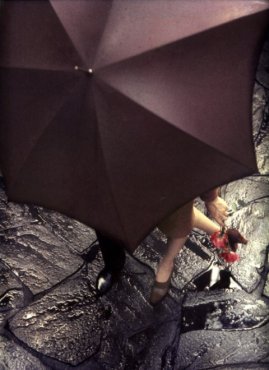 Gibson: Do you consider recognition as a somewhat random occurrence or do you think that true creativity will eventually be given the respect it deserves?
Gibson: Do you consider recognition as a somewhat random occurrence or do you think that true creativity will eventually be given the respect it deserves?
Leiter: The cream does not always rise to the surface. The history of art is a history of great things neglected and ignored and bad and mediocre things being admired. As someone once said “life is unfair.” In the 19th Century someone was very lucky. He or she acquired a Vermeer for $ 12. There are always changes and revisions of the appreciation of art, artists, and photography and writers and on and on. The late art of Picasso is no good but then a revision takes place and then it becomes very good as the art records indicate. Things come and go.
So you could essentially be the most talented photographer, but if history doesn’t play out in your favor– you can easily go ignored.
In a similar vein, he mentions how he believes that to be ignored if a privilege:
“I spent a great deal of my life being ignored. I was always very happy that way. Being ignored is a great privilege. That is how I think I learnt to see what others do not see and to react to situations differently. I simply looked at the world, not really prepared for anything.”
In the west, to become rich, powerful, and famous are desirable traits. I can definitely agree that in photography, everyone wants to become a celebrity and have hundreds of thousands of followers, to have exhibitions all around the world, and make a ton of money.
However for Leiter he didn’t care for any of that. Rather, he avoided fame– and lived a simple life for himself. He shot what he enjoyed, not needing external recognition or affirmation from others. He was happy and enjoyed his photography.
At times I wish I could be more recognized and famous for my photography. However a great lesson I learned from Leiter is to not worry about the fame and recognition- and simply shoot for yourself, and be happy.
3. Search for beauty
One of the traits I love about Leiter’s work is that it is very elegant. The soft pastels in his color photography as well as sometimes the intensity highlights the beauty of everyday life. Leiter isn’t a photographer who is looking for the pain and suffering of everyday life. Rather, he looks for the positive and uplifting moments and images of the world:
Q: Color is obviously a big part of your aesthetic, yet I think it sometimes obscures other concerns. For example, the people in your photographs are often hemmed in, fragmented or isolated from one another. Do you see the urban environment as a kind of alienating or isolating entity?
LEiter: I never thought of the urban environment as isolating. I leave these speculations to others. It’s quite possible that my work represents a search for beauty in the most prosaic and ordinary places. One doesn’t have to be in some faraway dreamland in order to find beauty. I realize that the search for beauty is not highly popular these days. Agony, misery and wretchedness, now these are worth perusing.
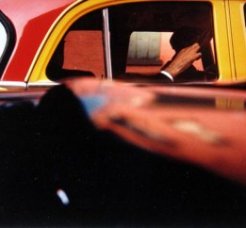
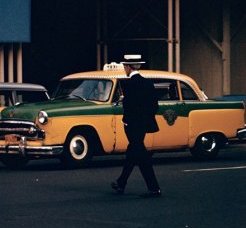
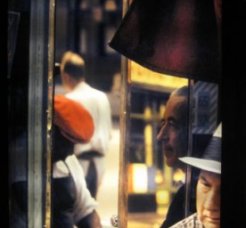
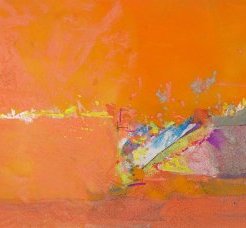
YOU MIGHT ALSO LIKE
